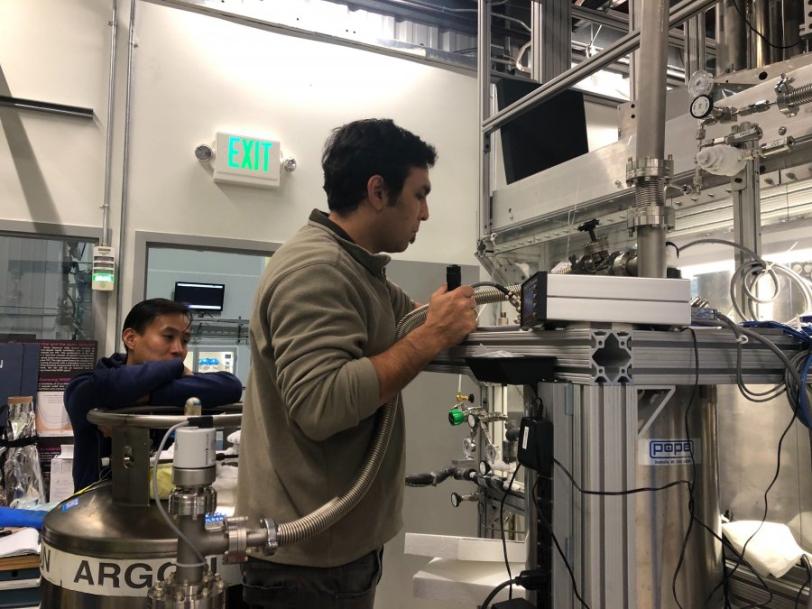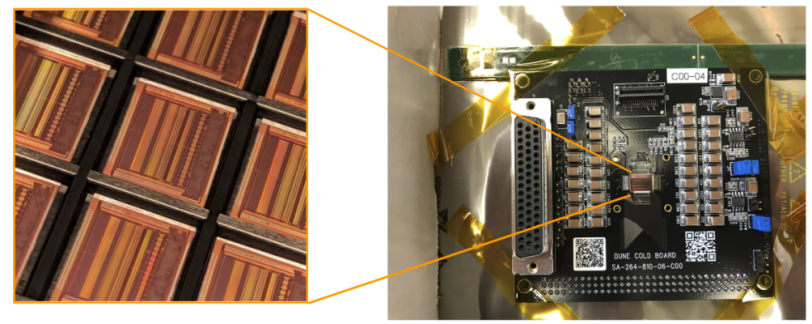Detector R&D

The DUNE experiment proposes a Far Detector comprising 40 kTons fiducial mass of Liquid Argon instrumented as a Time Projection Chamber (LArTPC). To date, the largest LArTPCs built have fiducial masses less than 1kTon. Scaling up the LArTPC technology is therefore a high priority for DUNE and the neutrino community. Also, DUNE requires a "Near Detector" to measure the properties of its neutrino beam before it has a chance to oscillate. SLAC physicists are working on developing detector technology for both of these aspects of DUNE.
Cold Electronics for DUNE Far Detector
Due to noise and other considerations, it is highly advantageous to postion the readout electronics for a LArTPC inside the cold volume. Development of "Cold Electronics" for readout of the TPC is therefore a key part of the LArTPC scale-up plan. DUNE will have more than one million ionization-sensing wires, each which needs to have its signal readout continuously. SLAC is working on an Application Specific Integrated Circuit (ASIC) that integrates all of the required readout functions into a single chip, called "CRYO".
In previous versions of the electronics, these functions - amplification, digitization and transmission had been each carried out by a separate chip. Integrating them on a single ASIC may greatly reduce the cost and increase the reliability of the electronic system. CRYO has been designed by engineers in SLAC's Advanced Instrumentation for Research (AIR) group. The first protoypes of CRYO were received in January 2019. SLAC physicists are currently working closely with AIR engineers to bench test CRYO. Once those tests are completed in Spring 2019, CRYO will be tested on prototype LArTPCs located at Fermilab in Illinois and at CERN in Switzerland.

Pixel LArTPC for DUNE Near Detector
The DUNE near detector (DUNE-ND) LArTPC component will use a 2D pixel readout which can record charged particle trajectories in a 3D image data, which provides sparsity in image to resolve individual particle trajectory in a busy environment of dozens of neutrino pile-up. Further, this detector will be modulated and consists of many independent LArTPCs. In order to reduce dead spacing between modules, and to achieve a better electric field uniformity, a new design of TPC field cage is pursued using high resistive materials such as Kapton sheet. A uniform electric field is central to high resolution particle imaging, and the development work including material testing and the design optimization in a cold environment with applied high voltage is on-going.
SLAC group: is leading the new TPC field cage design using Kapton sheets and a production of a prototype TPC module, which will be used for the DUNE-ND prototype experiment planned to run in 2021. The group established a cryogenic testing facility at SLAC IR2 building for taking measurements and future expansion of the development capability.

